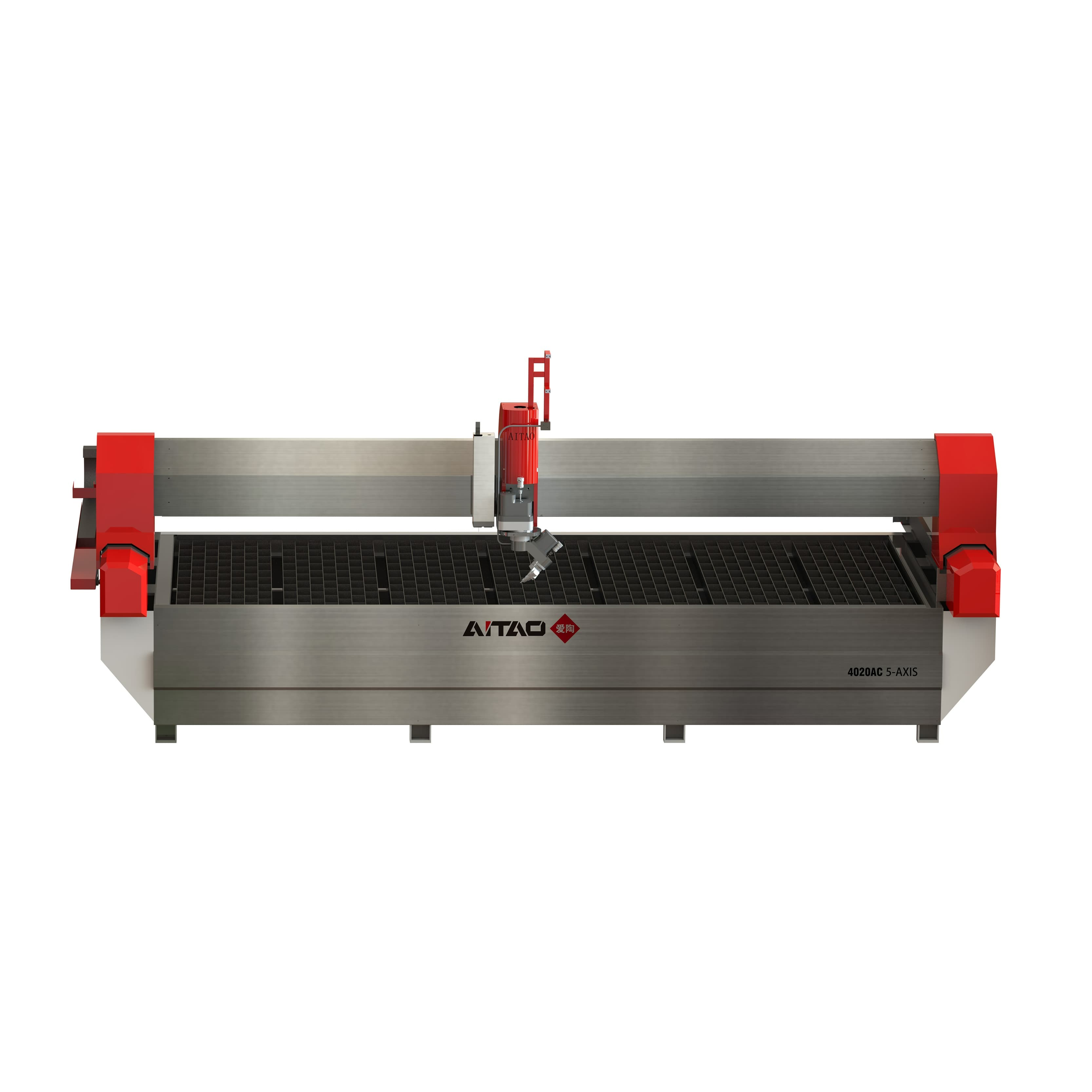Waterjet cutting is a versatile and precise method used in various industries for cutting a wide range of materials, from metals to composites and even stone. Despite its efficacy and efficiency, waterjet cutting might be seen as costly. In this article, we'll delve into the factors that contribute to the costliness of waterjet cutting and why it remains a valuable investment for many businesses. Additionally, we will explore how advanced 4-axis CNC technology can revolutionize waterjet cutting, offering enhanced precision and efficiency.
High Initial Investment
Investing in a waterjet cutting system, particularly one integrated with advanced 4-axis CNC technology, requires a substantial upfront capital outlay. The required machinery, including high-pressure pumps, abrasive supply systems, cutting heads, and precise 4-axis motion control equipment, accounts for a major percentage of the initial expenditure.
However, it's essential to recognize that this initial expense often pays off in the long run. Waterjet cutting systems with 4-axis CNC capabilities are meant to be long-lasting and reliable, providing continuous performance with regular maintenance. The initial investment is, therefore, an investment in the future productivity and capabilities of the business, enabling it to meet evolving customer demands and stay competitive in the market.
Maintenance And Operating Costs
To achieve maximum cutting quality, a waterjet cutting system, especially one utilizing 4-axis CNC technology, must be serviced regularly. This includes replacing consumable elements such as nozzles and seals and monitoring system performance. These maintenance activities incur ongoing costs, including labor expenses and the purchase of replacement parts. Additionally, the energy consumption associated with running high-pressure pumps and other advanced 4-axis equipment contributes to the overall operating expenses of waterjet cutting.
Despite these ongoing costs, businesses can optimize their maintenance schedules and practices to minimize downtime and prolong the lifespan of their 4-axis waterjet cutting systems.
Abrasive Consumption
Abrasive waterjet cutting relies on the injection of abrasive particles, such as garnet, into the water stream to enhance cutting efficiency, particularly for hard materials like metal and stone. The use of abrasives during the cutting process increases the total cost of waterjet cutting since these materials must be supplied regularly.
Factors such as material thickness, cutting speed, and desired surface finish influence the rate of abrasive consumption. While abrasive expenses may appear high, organizations may optimize cutting settings and abrasive usage to reduce waste and increase productivity. Additionally, advancements in abrasive recycling technologies offer opportunities to reduce costs by reclaiming and reusing spent abrasives, further enhancing the cost-effectiveness of waterjet cutting, especially when paired with 4-axis CNC precision.

Precision and Versatility
The precision and versatility offered by waterjet cutting technology are key factors contributing to its perceived expense. Waterjet systems, especially those enhanced with 4-axis CNC technology, can produce very accurate cuts with little material waste, making them excellent for applications that need elaborate patterns or tight tolerances. However, achieving such precision requires advanced technology and expertise, which adds to the overall cost of waterjet cutting.
Moreover, the versatility of waterjet cutting—its ability to cut a wide range of materials, thicknesses, and complexities—makes it a valuable tool for various industries. Despite the initial investment, businesses benefit from the flexibility and adaptability of waterjet cutting with 4-axis CNC capabilities, which allows them to undertake a wide range of projects and efficiently satisfy consumer requests.

Composite Material Waterjet Cutting
Time and Labor Intensive
While waterjet cutting is known for its speed and efficiency compared to many traditional cutting methods, it can still be time-consuming for complex projects or large-scale production runs. The programming and setup process, which includes CAD/CAM design, toolpath development, and material preparation, requires both skilled labor and time. Additionally, post-cutting processes such as edge finishing and quality inspection may further extend the overall production timeline.
Despite the time and labor requirements of waterjet cutting, organizations may streamline workflows and improve production processes to reduce lead times and increase productivity. Investing in automation technologies, such as robotic loading and unloading systems, can help reduce manual labor requirements and improve overall productivity. By using these tactics, firms may reduce the influence of time and labor expenditures on the entire cost of waterjet cutting, especially when leveraging 4-axis CNC automation, thus increasing their market competitiveness.
Conclusion
While waterjet cutting may appear to be more expensive than other traditional cutting technologies, the advantages in terms of precision, variety, and efficiency frequently outweigh the investment for many firms. Integrating 4-axis CNC technology into waterjet cutting further enhances its capabilities, making it an even more valuable asset for businesses looking to stay ahead in a competitive market. AITAO, as a professional waterjet cutting machine manufacturer, offers a wide range of waterjet cutting machines with advanced 4-axis CNC technology. You can choose the suitable one to fit your needs in AITAO.






